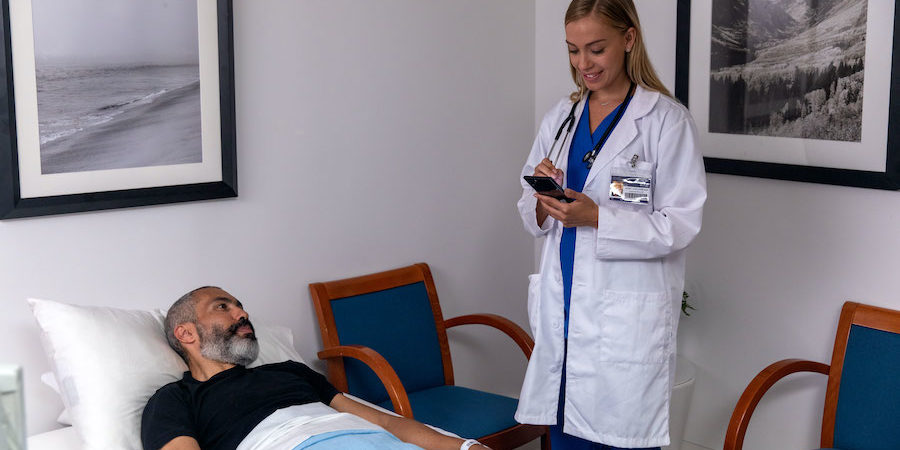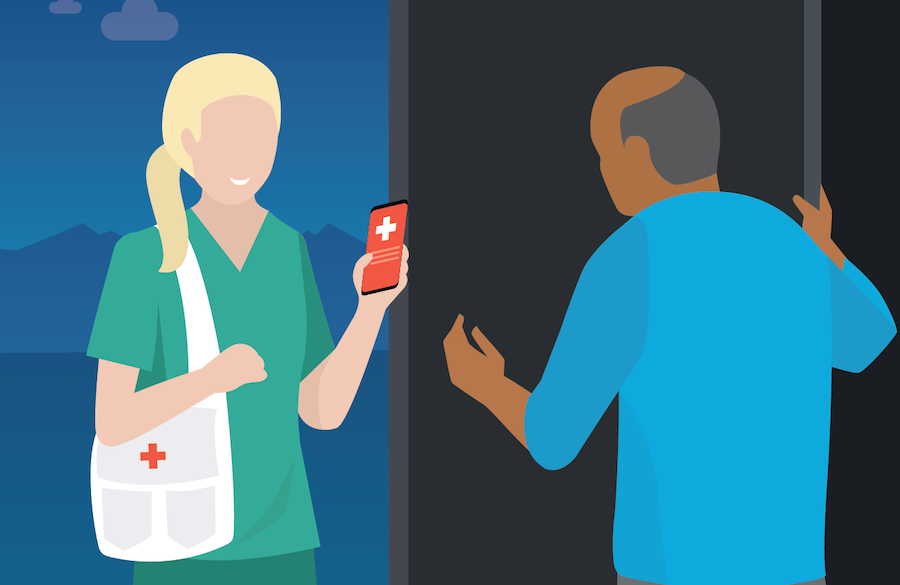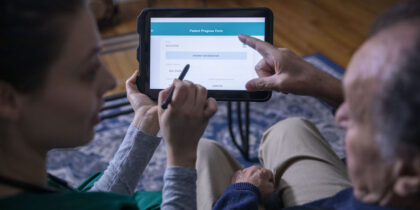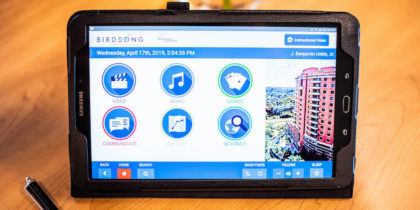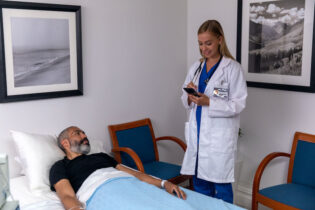2020 promised to be one of the most challenging years the home healthcare industry had faced, even before it became one of the most challenging years the world had faced in a century. Home healthcare agencies were adjusting to the new Patient-Driven Groupings Model (PDGM) — the most significant change to their billing system in decades — and preparing to implement electronic visit verification (EVV) ahead of the 2021 federal deadline. Then COVID-19 came along and introduced new challenges.
But it also created new opportunities. When the pandemic began, Brandy Sparkman-Beierle was President of UH Home Care for University Hospitals, a home health, hospice, personal care and pharmacy network serving 4,000 patients in the Cleveland area. A registered nurse for 17 years with eight years’ experience in transitional care, Sparkman-Beierle was prepared to face admin challenges in 2020, and having used Homecare Homebase software since 2006, she knew her organization had the right tech partner to help. But like everyone else, she wasn’t prepared for the coronavirus.
“When COVID hit, elective surgeries were suddenly delayed or canceled,” says Sparkman-Beierle. “Patients were afraid to have clinicians in their homes, which resulted in increased LUPAs — low utilization rates that significantly lower reimbursement rates. PPE [personal protective equipment] was in short supply, so telehealth suddenly became a requirement, but it’s not a reimbursable service for home health, so we were seeing patients virtually but not getting paid — all while trying to keep patients and staff safe. The industry’s saving grace is that in home health, we know how to adapt quickly and overcome challenges.”
Home care agencies — especially those with forward-thinking leaders and innovative digital solutions like Homecare Homebase — have demonstrated their adaptability and resilience during the pandemic. They’ve also proven they can handle sicker, more complex patients than hospitals have usually entrusted to them, and they can do it more cost-effectively than inpatient facilities — while keeping everyone safer.
Opportunities of healthcare’s new normal
After a sudden drop in patient census in the spring, many home care agencies have now rebounded to pre-COVID census levels or better. Most states have allowed hospitals to resume elective procedures, PPE is more widely available, and people are suddenly less confident in the safety of assisted-living facilities, skilled nursing homes and other communal senior care options. At the same time, hospitals have begun entrusting home care agencies with more complex cases — including COVID patients recovering at home and non-COVID patients who would usually spend a few more days in the hospital or spend some time in rehab before returning home.
Sparkman-Beierle, who joined Homecare Homebase in May as Senior Vice President of tech-enabled services, explains, “The pandemic allowed home health and hospice agencies to further demonstrate their value during this unprecedented time. Patients and families are really tapping into home-based care in lieu of outpatient visits, skilled nursing facilities and hospital admissions. The pandemic demonstrated the vast capabilities and the complex care we can actually provide in the home — a patient’s most sacred place and where most people would prefer to recover.”
The federal government agrees. In September, Centers for Medicare & Medicaid Services (CMS) administrator Seema Verma announced, “The tragic devastation wrought by the coronavirus on nursing home residents exposes America’s over-reliance on institutional long-term care facilities. Residential care will always be an essential part of the care continuum, but our goal must always be to give residents options that help keep our loved ones in their own homes and communities for as long as possible.”
Verma also pointed out that home healthcare is “not only frequently more cost effective, but is preferred by seniors and adults with disabilities seeking to maintain the dignity of independent living.”
Homecare Homebase ushers agencies through digital transformation
Increased demand is good news for home care agencies, but they’re still facing the same challenges as before — adapting to PGDM, preparing for EVV and meeting the needs of a growing and aging population despite a healthcare talent shortage and a pandemic that often forces workers to quarantine for seven to 14 days.
As the leading electronic health record (EHR) software for home-based care, Homecare Homebase addresses all these challenges and more, helping home health and hospice agencies achieve an average 3.8 star rating (versus the national average of 3.3 stars).
Your definitive guide to EVV compliance
Discover how mobile solutions can can help your agency satisfy your state's EVV requirements. Download Now
“Homecare Homebase isn’t just a software product; it’s also a tried-and-true operating model,” says Neal Reizer, Senior Vice President of product management. “The software focuses on the compliance and utilization management aspects of running a business at scale — allowing you to grow your business without necessarily adding staff — and it provides a rich set of analytics that give you visibility into clinical and financial operations across your organization. But we also work with the top 10 agencies in the country, and we listen to those customers and seek out their feedback about workflows and best practices. And we connect our customers with each other, so when you bring on Homecare Homebase, you’re joining the top operators in the country and have access to them as peers.”
From a clinician perspective, Homecare Homebase’s mobile EHR solution, which comes preloaded on Samsung Galaxy tablets, keeps care providers connected to the people and data they need to do their jobs, without impeding their connection to patients.
“When we were using laptops and paperwork, the laptop always seemed like a barrier between the clinician and the patient,” says Sparkman-Beierle. “The Samsung tablet creates that connection with the patient where they don’t feel like there’s a barrier between them and their caregiver. I can put the tablet in my coat pocket if I’m doing a physical exam, and the touchscreen is very helpful as well.”
Coping with COVID
During the height of the pandemic, clinicians were also using their Samsung tablets to conduct virtual visits, often while sitting outside their patients’ homes, venturing inside only long enough to complete hands-on tasks. These new ways of working required new integrations, and Homecare Homebase made that a top priority.
“Our customers were rapidly acquiring telemedicine and remote monitoring technology, so we shifted our interoperability team to focus on new integrations,” says Reizer. “But we didn’t really have to make any material application changes to our software in support of COVID-19, because there are so many out-of-the-box capabilities in the platform that we were able to leverage very quickly. Within four weeks, we released dashboards that allow agencies to identify and locate COVID patients, along with CDC [Centers for Disease Control and Prevention] screening guidelines.”
Now that home care agencies have found their footing, Homecare Homebase is back to focusing on the other challenges that home health agencies are currently facing — particularly PGDM — and helping agencies take advantage of new opportunities.
Reizer says agencies that have not only survived, but actually thrived, during the pandemic are the ones that have forward-thinking leaders and innovative technology. “If you’re a good operator, if you’ve got good relationships with your referral sources and good operational standards and guidelines, if you’ve got good management oversight, if you’re using data to drive your decisions about branch effectiveness and your overall financial health and clinical outcomes — I think you absorbed COVID better than your peers. COVID was a pressure test for leadership. Because most of our customers were led very well, and their teams had the technology they needed to work effectively and efficiently, I think that’s why they were able to weather this, and some have even come out stronger.”
Discover new ways that healthcare professionals are delivering value-based care in the COVID era. Then learn how to establish a successful remote patient monitoring program in this free guide.
